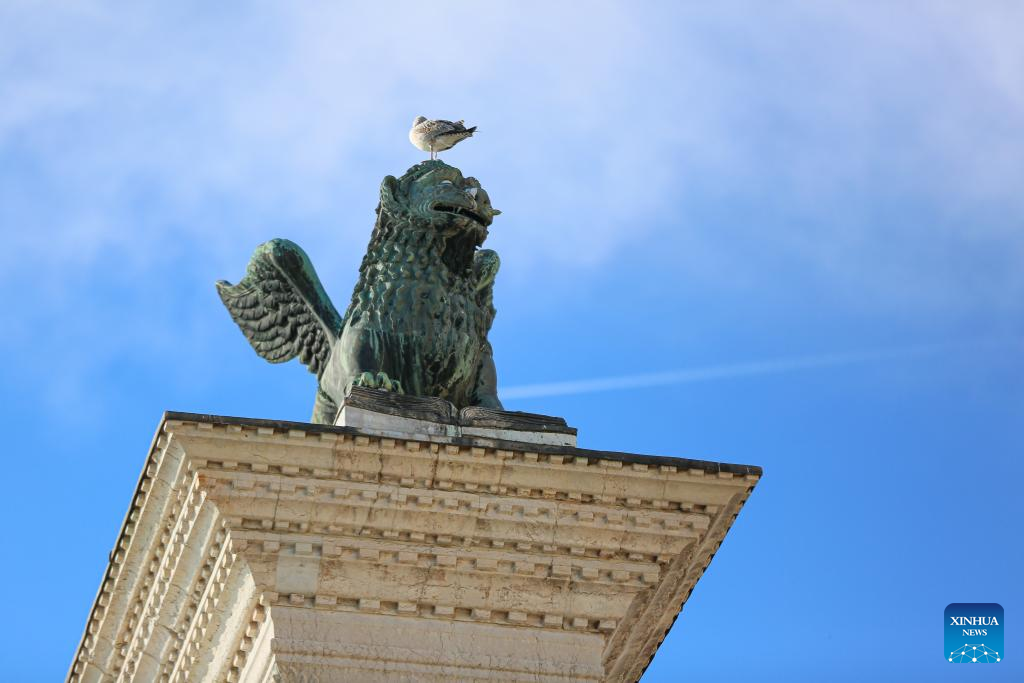
This photo taken on Nov. 6, 2024 shows the Lion of Venice on St. Mark Square, Venice, Italy. (Xinhua/Li Jing)
ROME, Nov. 8 (Xinhua) -- Towering atop a column in St. Mark Square, Venice, Italy, the massive bronze lion has long symbolized the city's power and heritage for centuries. Yet its actual origin has remained a mystery.
A recent study led by a team of Italian scientists, including archaeologists, geoscientists, and sinologists, suggests the iconic bronze lion may actually trace its roots back to China's Tang Dynasty (618-907).
"I have been fascinated by the lion since my youth because of its unique appearance," said Massimo Vidale, a professor from the Department of Cultural Heritage of the University of Padua.
"It is so different from any other statue that we have in Italy or other parts of the Western world," he said.
The origin of the Lion of Venice, which is approximately four-meter in length and weighs around 3000 kg, has puzzled archaeologists for years. However, recent advancements in geoscience analysis, alongside a comprehensive extensive database of ore sources, are shedding light on its past.
"Lead isotope analysis, combined with chemical analysis, is currently the most reliable method to trace the source of metals," said Gilberto Artioli, a professor from the Department of Geosciences of the University of Padua.
Artioli and his team conducted lead isotope analysis on the lion, using three new samples from the statue. "To confirm the origin, the integrity of the database is crucial," he emphasized, noting that their research incorporated data from ore deposits across Eurasia, including a 2019 study on the chemical composition of Chinese ores.
"Based on the samples and existing data, we can say with certainty that the copper used for the original part of the lion came from mines in the lower reaches of the Yangtze River in China," Artioli said.
Vidale added that these isotope findings align with stylistic analyses, which support a Chinese origin. Italian scholar Bianca Maria Scarfi first suggested in 1990 that the Lion of Venice displayed stylistic similarities with specific Chinese cultural figures.
Further analysis revealed that distinctive features of the lion, such as its large nose, flared nostrils, bared fangs, and ferocious expression, closely resemble Tang-era "tomb guardians," some of which are on display in the Luoyang Museum in central China's Henan Province.
"The overall shape of the Venice bronze lion has characteristics of the Tang Dynasty 'tomb guardian'," confirmed Li Kewei, a researcher at the Luoyang Institute of Archaeology, in an interview with Xinhua.
While the exact route the lion may have travelled remains unknown, scholars suggest it could have arrived in Venice via the ancient Silk Road, probably the Maritime Silk Road.
According to Li, bustling international trade along the Yangtze River would have facilitated the transport of such a large bronze figure.
Some Italian academics further suggest that Venetian explorers - possibly Marco Polo's father Niccolo and uncle Maffeo might have brought the lion to Venice in the 13th century.
"What is certain is that when Marco Polo returned to Venice from China in 1295, it had been installed on the top of the column in St. Mark's Square," Vidale noted.
This theory hints at a profound East-West connection dating back to ancient times, highlighting the Silk Road's role in cultural exchange. "The connection between the Lion of Venice and China reflects the far-reaching influence of the Silk Road," Vidale said.
In light of new theories, new findings, and ongoing advancement in archaeological technology, the research team hopes to establish partnerships with Chinese academic institutions. "It would also be greatly advantageous to collaborate with Chinese scholars to enhance the depth of the analyses," Artioli said.
"We eagerly anticipate the opportunity to examine other Chinese bronze statues of the same period to confirm the origin of the metal during the Tang period from both analytical and stylistic-historical perspectives," he added. ■
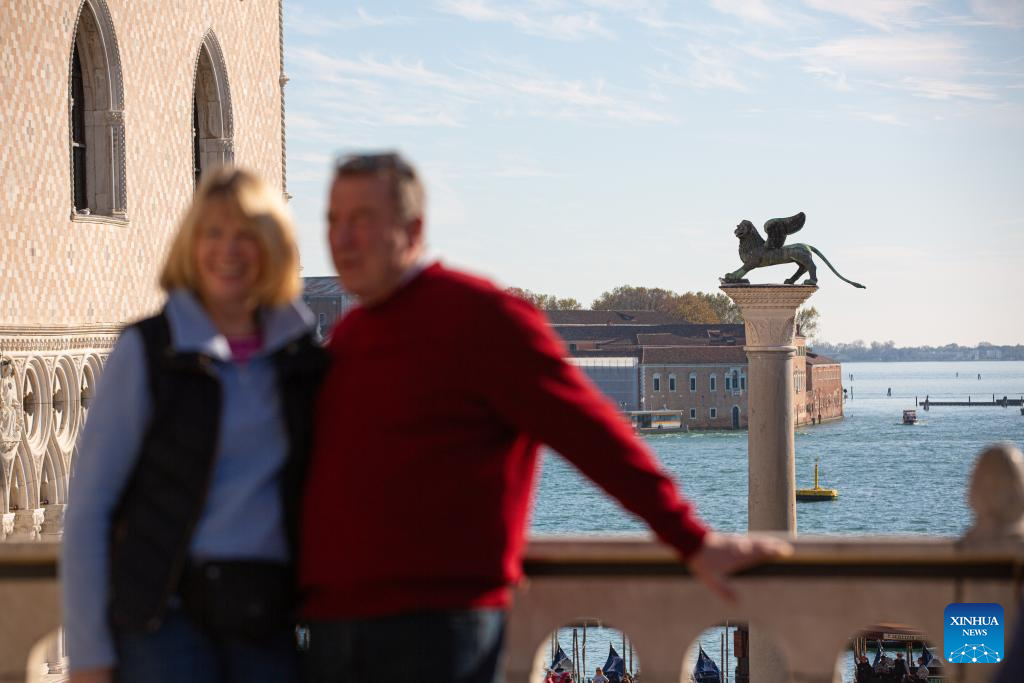
Tourists pose for a photo with the Lion of Venice on St. Mark Square, Venice, Italy, Nov. 6, 2024. (Xinhua/Li Jing)
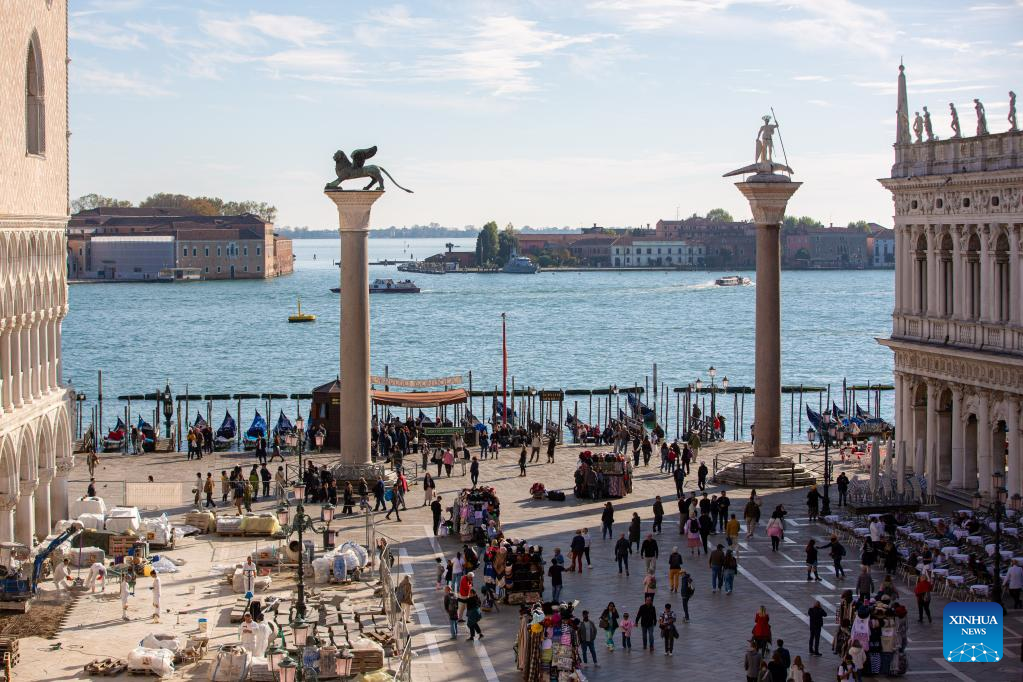
This photo taken on Nov. 6, 2024 shows the Lion of Venice on St. Mark Square, Venice, Italy. (Xinhua/Li Jing)
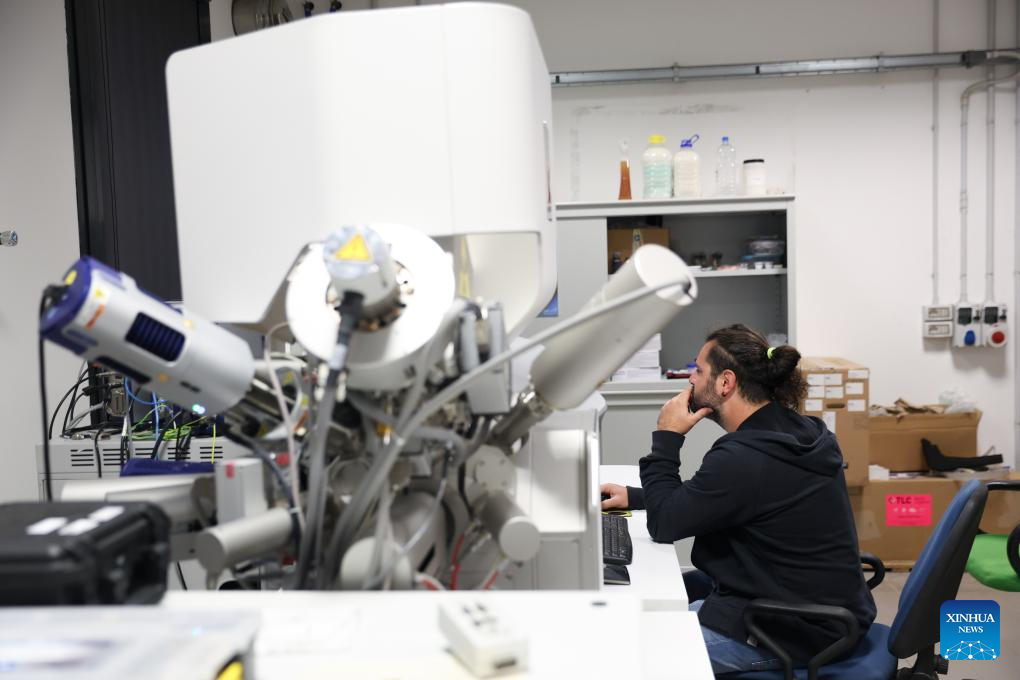
A lab technician of the University of Padua shows the experimental process of the Venice bronze lion samples in Padua, Italy, Nov. 6, 2024. (Xinhua/Li Jing)
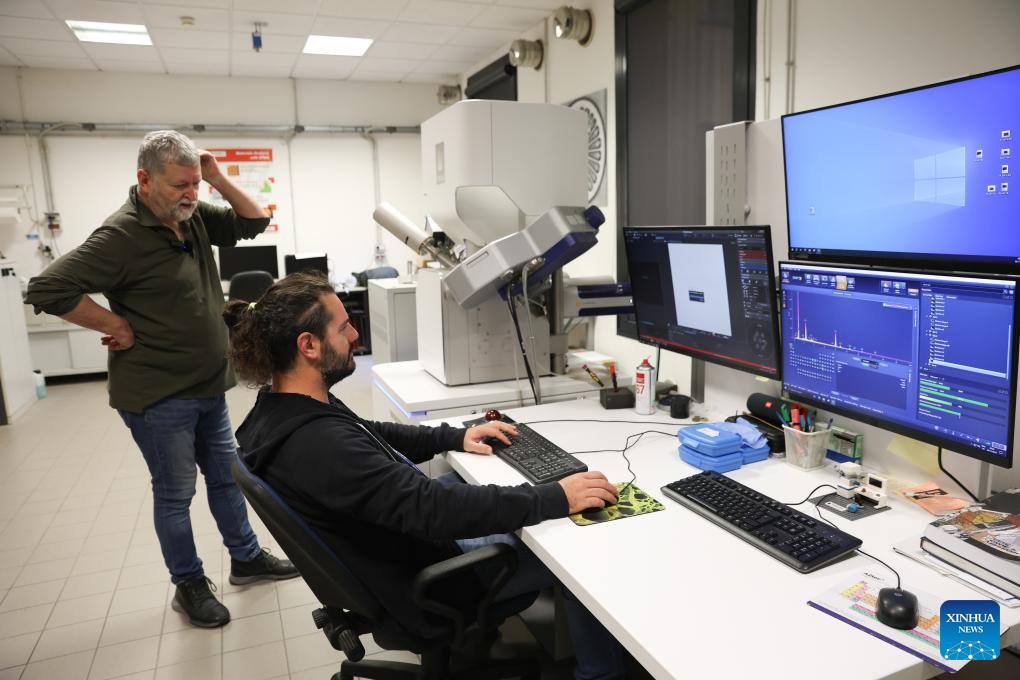
Massimo Vidale (L), a professor from the Department of Cultural Heritage of the University of Padua, talks with a lab technician about the experimental process of the Venice bronze lion samples in Padua, Italy, Nov. 6, 2024. (Xinhua/Li Jing)
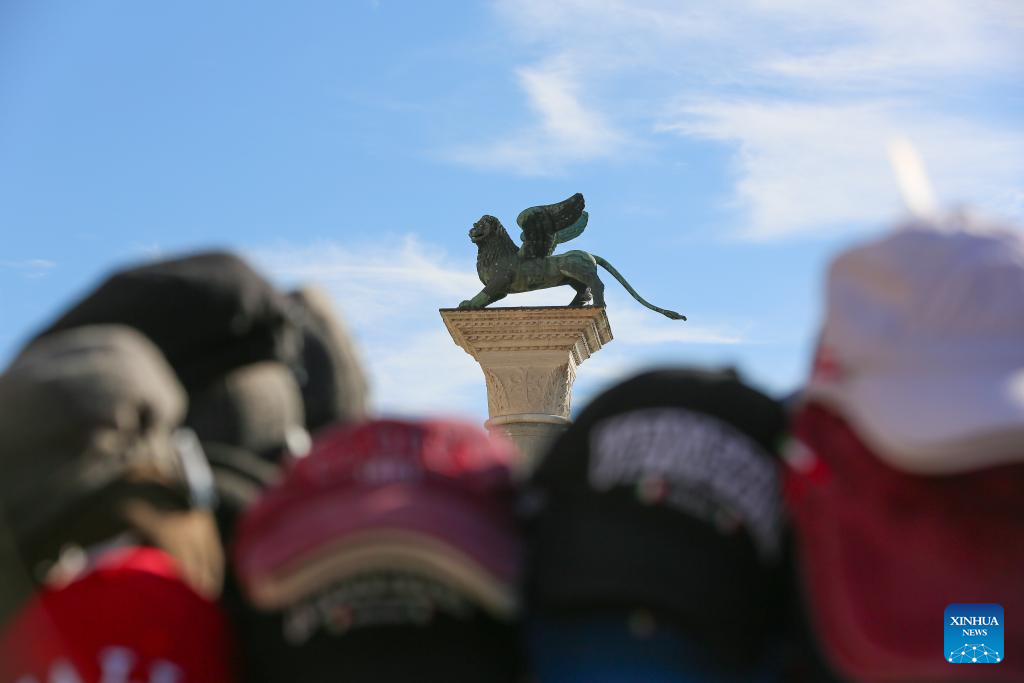
This photo taken on Nov. 6, 2024 shows the Lion of Venice on St. Mark Square, Venice, Italy. (Xinhua/Li Jing)
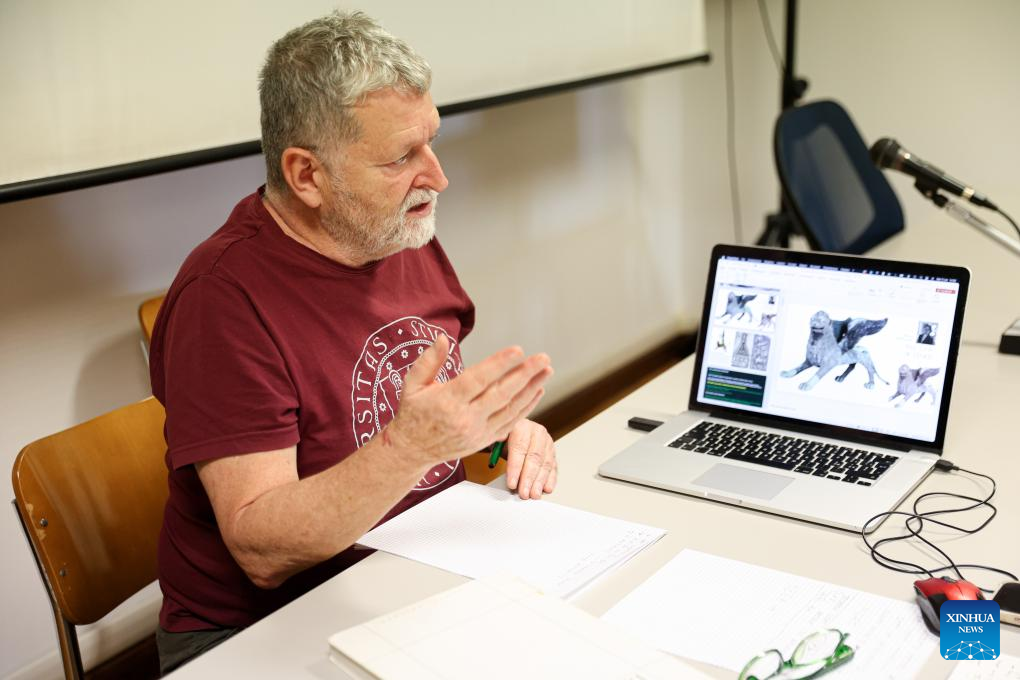
Massimo Vidale, a professor from the Department of Cultural Heritage of the University of Padua, introduces his findings on the Venice bronze lion in Padua, Italy, Nov. 5, 2024. (Xinhua/Li Jing)

A lab technician of the University of Padua shows the experimental process of the Venice bronze lion samples in Padua, Italy, Nov. 6, 2024. (Xinhua/Li Jing)
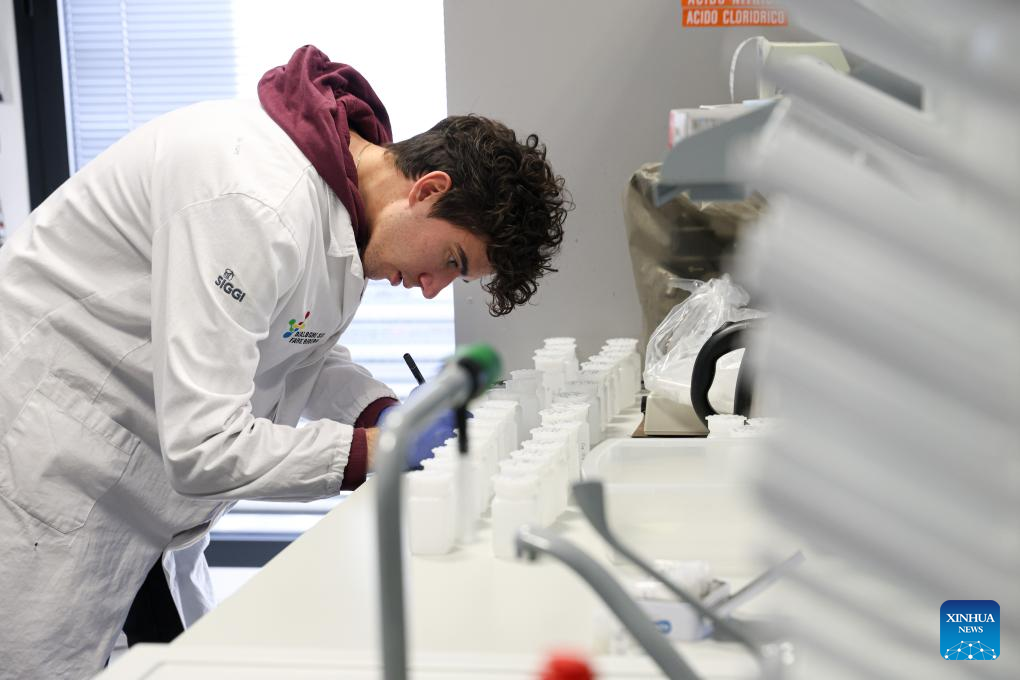
A lab technician of the University of Padua shows the experimental process of the Venice bronze lion samples in Padua, Italy, Nov. 6, 2024. (Xinhua/Li Jing)
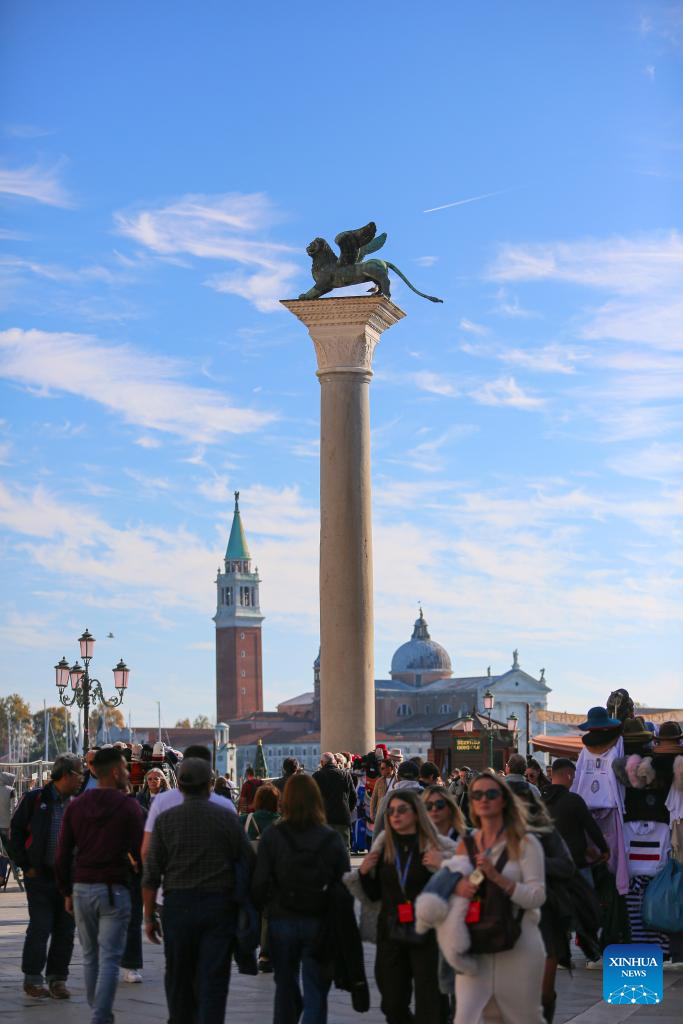
This photo taken on Nov. 6, 2024 shows the Lion of Venice on St. Mark Square, Venice, Italy. (Xinhua/Li Jing)
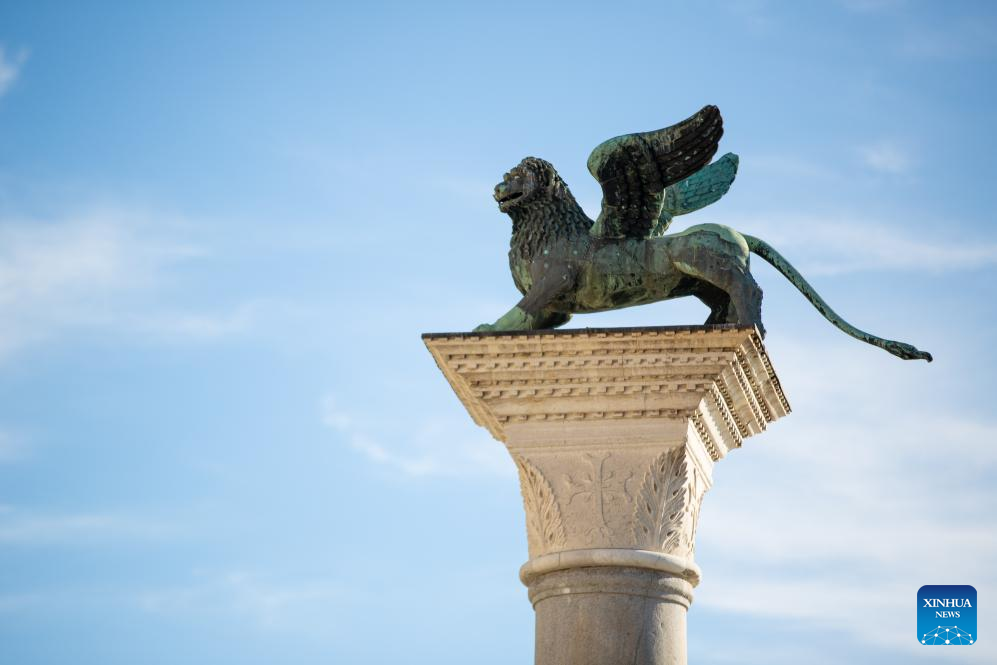
This photo taken on Nov. 6, 2024 shows the Lion of Venice on St. Mark Square, Venice, Italy. (Xinhua/Li Jing)
